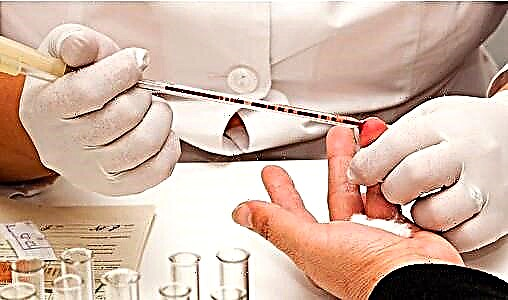
The appearance of various microbes in the urinary sediment is a rather dangerous symptom, especially during pregnancy. The appearance of a bad result of the conducted bacterial culture of urine leads a pregnant woman to real shock. The expectant mother should not be worried. This condition responds well to therapy.

What it is?
A general urine test is one of the basic laboratory tests that are prescribed during pregnancy. With this simple study, doctors get a lot of different clinical information. If bacteria are present in the urinary tract of the expectant mother, then this symptom manifests itself in the urine. In this case, as a result of the general analysis of urine, a special marking appears that microorganisms are present in the urinary sediment. The appearance of such a symptom requires a mandatory consultation with an obstetrician-gynecologist and a therapist who observe a woman during pregnancy.

A general urine test is a kind of screening test that only shows the presence of microbes in the urinary tract. Unfortunately, it is impossible to determine which microbes these are. To type bacteria, a special study is carried out, which is called bacteriological. In short, experts call this method bakseeding.
The reviews of the mothers who conducted this study indicate that thanks to this test, it was possible to timely treat the exacerbation of many renal diseases. Normal urine should not contain any bacteria. The appearance of microbes in the urine sediment is always a sign of trouble. This symptom should never be ignored.

Bacteriuria is a pathological condition caused by the appearance of various bacteria in the urine. A variety of reasons can lead to the development of this pathology. This condition can also develop in a woman before pregnancy. If the expectant mother has any diseases of the kidneys and urinary tract even before conception, then the risk of developing bacteriuria in her increases several times.

Development reasons
Quite often it happens that the carriage of various pathogenic bacteria is asymptomatic. Many expectant mothers do not even suspect that they have signs of bacteriuria. This is revealed spontaneously, during a general urine test, which is regularly prescribed to all pregnant women:
- Pathology of the kidneys and urinary tract Are the most common causes of bacteriuria in a pregnant woman. It is important to note that such pathologies usually manifest themselves not only by the appearance of bacteria in the urinary sediment. Also, under these conditions, the number of erythrocytes or leukocytes in the urine changes, pH and density change.
- Pyelonephritis and cystitis are the most common pathologies leading to the appearance of a large number of bacteria in the urine. Every year, these diseases of the excretory system are the leading causes in the development of bacteriuria in pregnant women. Pyelonephritis, as a rule, has a latent course and may practically not appear in any way before pregnancy.
- Physiological weakening of immunitythat occurs during any pregnancy promotes bacterial growth. Ultimately, this is manifested by the appearance of bacteriuria. To eliminate this symptom, the mandatory prescription of special medicines and uroseptics is required.

- Many mothers are interested in why exactly all kidney diseases are activated during pregnancy... The answer to this question is simple. The growing uterus exerts strong pressure on the kidneys and ureters, which are located retroperitoneally. This leads to the fact that the outflow of urine through the urinary tract is significantly hampered. A protracted process contributes to the appearance of bacteriuria.
- Multiple hormonal changes occurring during pregnancy lead to the development of stagnation of urine in the ureters. Congenital malformations of the urinary tract only exacerbate the development of this condition. Also, according to statistics, miniature women with a narrow pelvis are more prone to developing bacteriuria.
- Bowel disease, especially its end sections, can contribute to the development of combined pathologies of the urinary tract and kidneys. Doctors note that in women suffering from intestinal dysbiosis, the risk of developing bacteriuria increases several times.


- Violation of the rules of personal hygiene Is another point that leads to the development of bacteriuria. It is very important to cleanse regularly during pregnancy. Always iron your underwear with a hot iron on both sides. Such a simple preventive measure will help to avoid the appearance of bacteriuria in the future mother in the future.
- Immunodeficiency states provoke the development of bacteriuria. Their severity can be different. To correct the violations that have arisen, the appointment of special therapy may be required.

How is bacterial sowing performed?
To conduct a bacteriological study, it is required to correctly collect urine. This should be done in the morning, immediately after waking up. You need to collect a medium portion for research. To do this, you must first urinate a little in the toilet.
Before collecting urine for research, doctors recommend washing. This must be done from front to back. Such a simple measure will help prevent the possible entry of E. coli and other microbes from the anal area to the genital area.
For washing, you can use ordinary baby soap or special products that do not have an aggressive chemical composition and have a neutral pH. You can also wash yourself with plain water. This should be done without fail, since non-observance of hygiene rules often leads to a distortion of the results obtained.
Collect material in a clean, dry container. You can buy it at any pharmacy near your home. Pay particular attention to ensure that the lid of such a plastic container is screwed on tightly. This will prevent possible leakage of urine while transporting it to the laboratory.
Bring the analysis to the clinic for research should be with a referral. It is issued "in the hands" of a pregnant woman in the antenatal clinic. This medical form indicates the patient's data, as well as the gestational age. Also, special marks for laboratory technicians can be placed in the direction.
The biomaterial should be delivered to the laboratory within a maximum of 2 hours after its collection. This accuracy is essential for timely sowing on nutrient media. In some cases, the collected urine may be stored in the refrigerator for 8 hours. However, it should be noted immediately that in the future this may lead to obtaining unreliable results.

For bacterial sowing, special nutrient media are used. They are selected taking into account the characteristics of the life cycle of the microbes under study. Such "cultivation" is carried out in special conditions, which are created by devices and apparatus.
It takes several days for microbial colonies to grow. This is largely due to the rather long period of bacterial sowing. It usually takes at least 5-7 days to complete this study.

The importance of doing research
The constancy of the normal microflora of the external genital organs of a pregnant woman, especially during the third trimester, is very important. Week 38-40 is the final stage of pregnancy. During childbirth, the baby will pass through the birth canal of the mother. It is during this period that he can "pick up" the bacteria that are present in this zone. In order to prevent this, bacteriological studies are carried out.

The importance of bacterial culture during pregnancy cannot be overstated. This is also due to the fact that this analysis is carried out at least twice for the entire period of bearing the baby. For the first time, it is carried out during registration for pregnancy in a antenatal clinic. The next bacterial sowing is performed already at 36 weeks.
If the expectant mother has some kind of kidney or urinary tract diseases, then this study may be carried out a little more often.

Bacterial culture, carried out during pregnancy, not only allows you to identify pathogenic microbes, but also helps doctors to prescribe better treatment.
With the help of this analysis, specialists can predict the course and prognosis of the development of a specific pathology, as well as suggest the potential risk of bacteriuria for the fetus.
Decoding analyzes
The evaluation of the obtained research results is carried out only by a doctor. Laboratory assistants indicate the obtained values on the form, which are further interpreted by the obstetrician-gynecologist. It is worth noting that a diagnosis is never made based on one analysis. To establish the pathology, a whole set of clinical signs, as well as data from other laboratory and instrumental studies, are assessed. The results of the analysis are counted in special units of measurement called CFU. The calculation is carried out for 1 ml of the test liquid. Normal values do not exceed 1000 CFU / ml. In such situations, as a rule, doctors do not prescribe any special treatment.

If the obtained analysis result is in the range from 1000 to 100000 CFU / ml, then in this case, the study must be repeated. This result is questionable. Also in this case, the doctor may recommend taking additional biochemical tests. Exceeding the indicator above 100,000 CFU / ml is already unfavorable and requires therapy. Treatment is prescribed only after the diagnosis is established. A strong exacerbation of a bacterial infection is a medical indication for an urgent hospitalization of a future mother in a hospital.

Asymptomatic variants of bacteriuria are often triggered by E. coli. This microbe can colonize the genitals and mucous membranes of the urinary tract without causing any adverse symptoms. Only with an increase in its concentration in urine, a woman begins to show some clinical signs that give her some discomfort. The combination of high white blood cells and bacteria in the urine is an extremely unfavorable symptom... As a rule, it indicates the development of infectious pathologies of the urinary tract and kidneys. Also, this symptom can manifest itself with poor-quality collection of urine for research. In such a situation, leukocytes "get" into the urinary sediment from the genital tract.

What does bad analysis mean?
The appearance of bacteria in the urine should not shock or panic the expectant mother. To begin with, this analysis should simply be double-checked. In this case, more thorough preparation should be carried out. Before collecting urine, be sure to complete all hygiene procedures. This will help you get a more accurate result. If bacteria are obtained in the repeated analysis, then this is already a reason for conducting a complex of extended diagnostics. If necessary, the patient is referred for a consultation with a urologist. This is especially necessary if the expectant mother had any kidney or urinary tract diseases even before pregnancy.

The appearance in the bacterial culture of an increased concentration of staphylococcus is a significant reason for the appointment of therapy. If the violations are mild, then antibiotics will not be required. It should be noted that during pregnancy, doctors resort to prescribing antibacterial agents only in exceptional cases when there is no other alternative. Taking antibiotics, especially in the early stages of pregnancy, can be extremely dangerous... A moderate amount of bacteria can get into the urinalysis and during a healthy pregnancy. This usually happens in cases where the collection of biomaterial was made incorrectly. To prevent the development of such a situation, doctors recommend covering the vaginal area with a cotton pad or tampon. This will help prevent bacteria from entering the urine.

Normally, there should be no pathogens in the urinary sediment. Deviations from normal values should become a mandatory reason for additional diagnostics. In this case, it may be necessary to conduct several bacterial cultures of urine with an interval of several weeks. In certain situations, when a woman has kidney disease, an ultrasound scan may also be needed.

Further actions
Hospitalization is a compulsory measure used only for severe bacterial infection. Also, doctors can resort to it when there is a real threat to the mother or her baby. In this case, it is required to inject drugs. The length of hospital stay can be different and depends on the initial severity of the condition of the expectant mother or fetus. The primary goal of therapy is to normalize the decreased outflow in the urinary tract. For this, special drugs are used that have a diuretic effect. The dosage and frequency of use are determined individually, taking into account the weight and condition of the patient.

In some cases, to improve urinary outflow, doctors recommend that the expectant mother with an aggravated urinary infection lie more on the intact side of the body. Some specialists will prescribe special positional drainage therapy. For this, the knee-elbow position is used.
Pain relievers and antispasmodics can be used to relieve pain. These funds not only reduce the severity of pain, but also help improve the outflow of urine through the ureters. Drotaverina hydrochloride, Baralgin and many others can be used as such drugs. Antispasmodics are administered, as a rule, by injection.

In cases of ineffectiveness of conservative therapy, more invasive methods are used - catheterization of the pelvis using stents or special urological instruments. This procedure is carried out only by a urologist for strict medical reasons. The risk of injury with these invasive techniques is quite high. This explains the fact that these studies are not carried out for all pregnant women with urinary outflow disorders. In severe cases of a bacterial urinary tract infection, antibacterial and detoxification therapy is also prescribed. Such treatment is necessary to normalize the general condition of the expectant mother. Also, without this therapy, it is impossible to reduce the risk of the formation of possible pathologies in the fetus.

Normalization of pH is an important step in the treatment of bacteriuria. Doctors have long noted that many bacteria begin to multiply actively in the changed environment. Normalization of pH leads to the restoration of the excretory function. This can be achieved through the use of various uroseptic drugs. In uncomplicated cases, doctors resort to prescribing medicinal herbs that have this type of action. These drugs are prescribed for a course reception.After the treatment, the effectiveness is necessarily assessed. For this, a repeated urine culture is prescribed.

As uroseptics that can be used at home, cranberries and lingonberries are perfect. These northern berries contain quite a lot of biologically active substances that have a pronounced uroseptic effect on the urinary tract. Cranberry or lingonberry juice will be an excellent drink for all pregnant womenhaving adverse manifestations of bacteriuria.

For more information on asymptomatic bacteriuria, see the following video.



